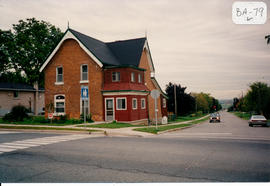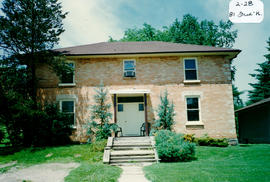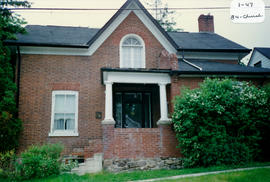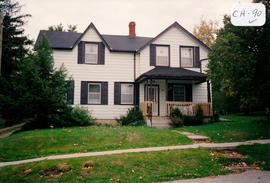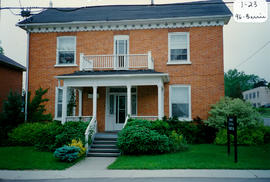72 Barrie Street (10 Joseph Street) Dr. Blackwell's House
- CA BWGPL GJ-HB-2017-03-10-01
- Item
- 1996
Part of George Jackson fonds
Dr. Gilbert Blackwell’s House is located on the southwest corner of Barrie and Joseph Streets at 72 Barrie Street. His office faced Joseph Street. The structure was built in 1935 by builder Art Saint in the Arts and Crafts style.
The simple form has an asymmetrical façade and a rectilinear plan. A broad, steeply-pitched, bell-cast roof with a centre dormer extends down to reduce the scale of the building from the street. It also covers the original front porch (which has been enclosed). The structure has wide window openings with low floor to ceiling heights. A wide band of windows across the front of the dormer emphasizes the horizontal lines and massing of this house. Smaller, second-storey windows in the front dormer are offset from the ground-floor windows and have plain, wood sills and trim. The original arched openings in the front porch have been infilled and new windows have been installed. Brackets support the cornice at the roof and there is a central, brick chimney. The house has wood frame construction, stucco cladding and a painted, concrete foundation. A mix of exterior cladding materials is common to this style. The windows, awnings, and the one-storey, rear addition are not original. According to the 2000 inventory, the house is in good condition with some original features. (1, 3)
George Jackson


